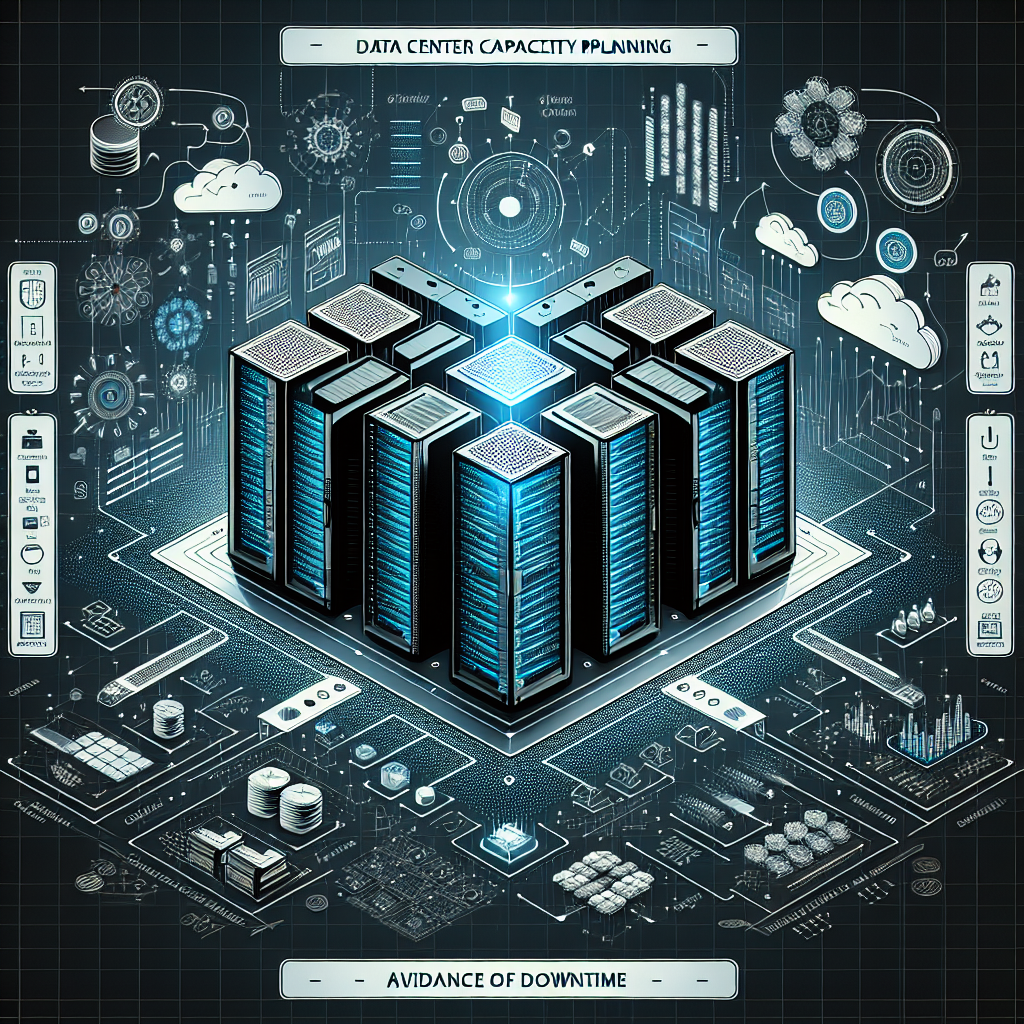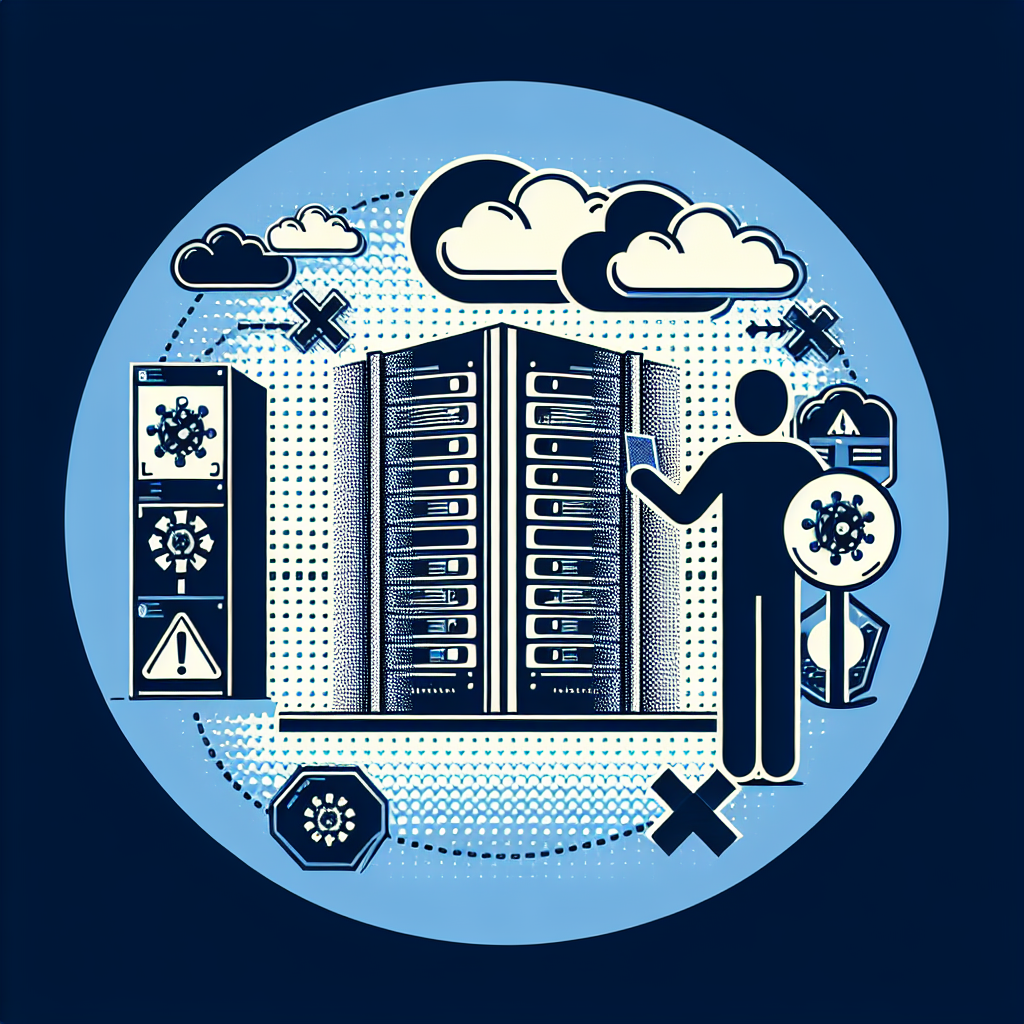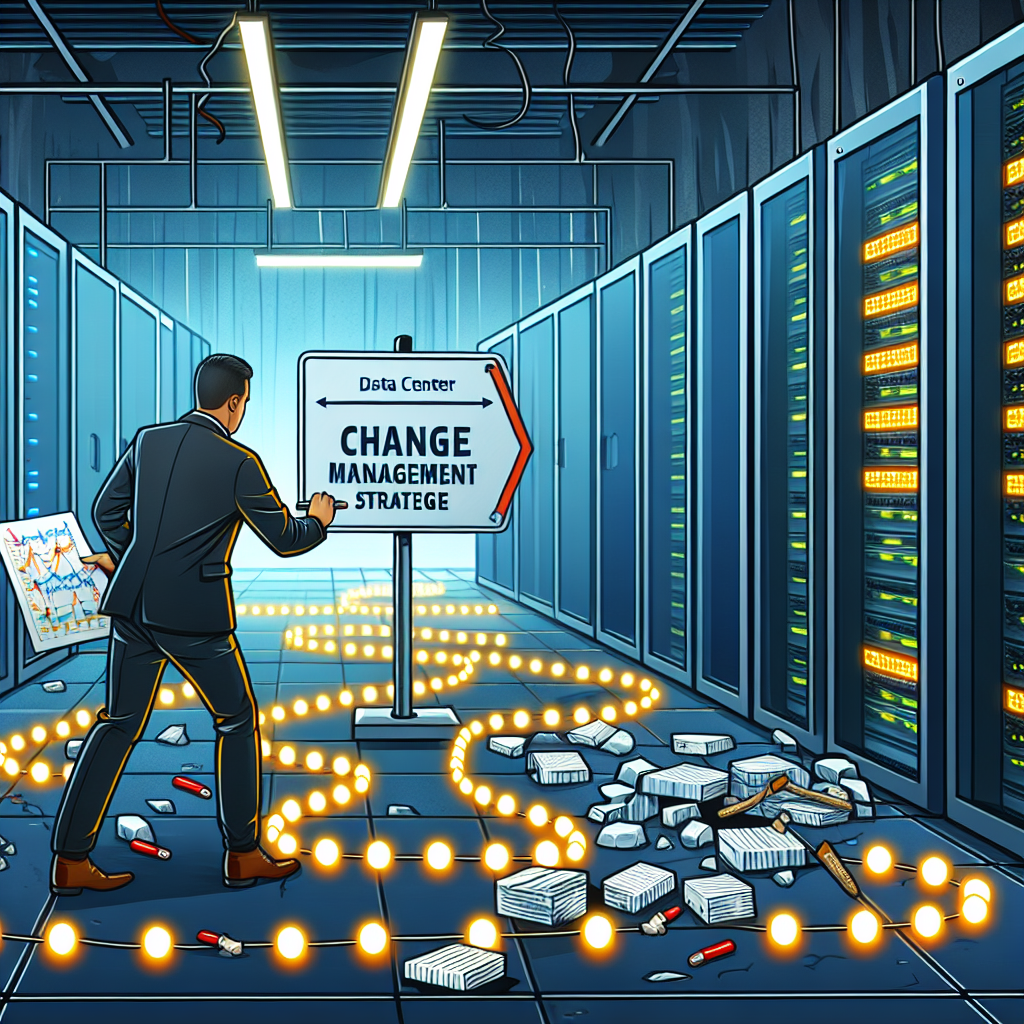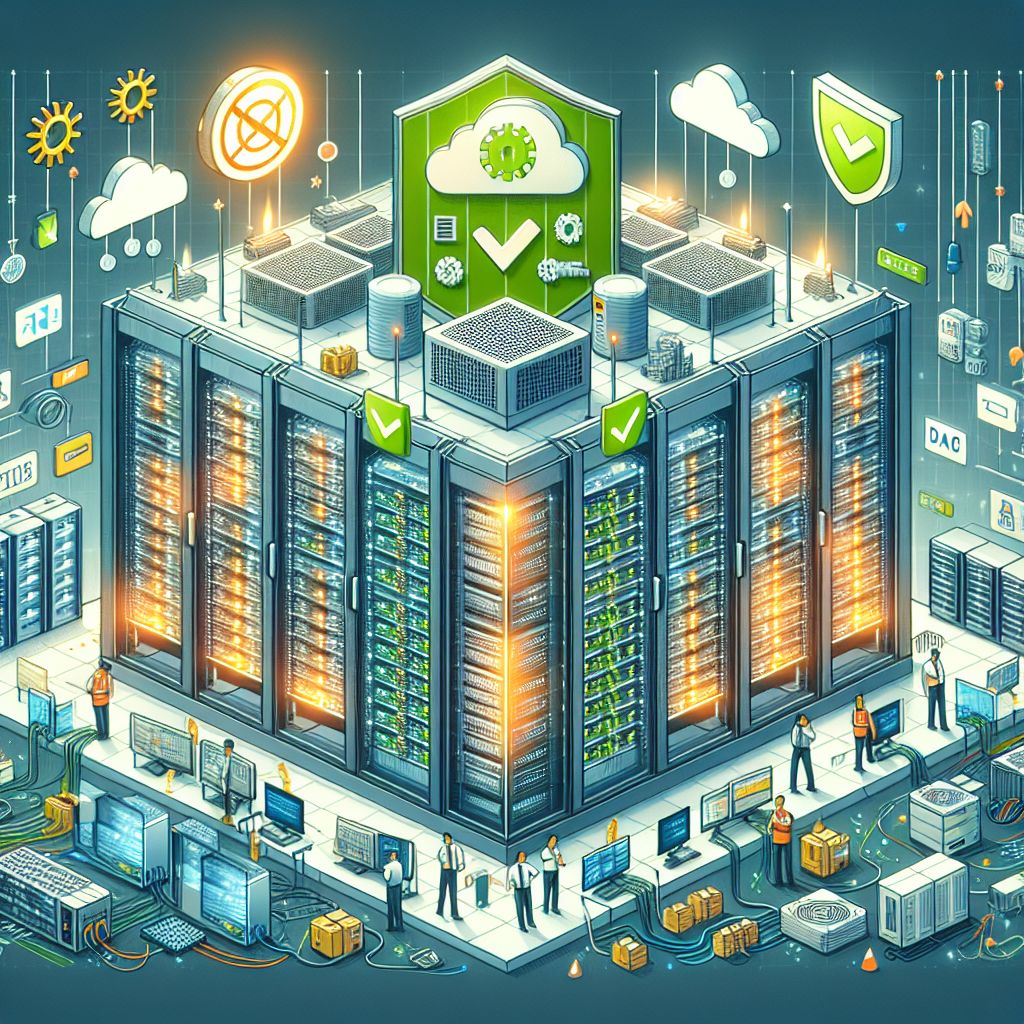Your cart is currently empty!
Tag: Avoiding

Avoiding Common Data Center Cabling Mistakes: Tips for a Smooth Installation
Data center cabling is a critical component of any IT infrastructure. Proper cabling ensures that data can flow seamlessly between servers, networking equipment, and storage devices. However, even experienced IT professionals can make mistakes when it comes to data center cabling. These mistakes can lead to downtime, performance issues, and increased maintenance costs. To help you avoid common data center cabling mistakes, here are some tips for a smooth installation.1. Plan Ahead: Before you start cabling your data center, it’s important to have a clear plan in place. This plan should include the layout of your data center, the types of cables and connectors you will use, and the routing of cables between equipment. By planning ahead, you can ensure that your cabling is organized and easy to manage.
2. Use High-Quality Cables and Connectors: It may be tempting to cut costs by using cheap cables and connectors, but this can lead to performance issues and maintenance headaches down the road. Invest in high-quality cables and connectors that are designed for data center environments. This will ensure that your cabling can handle the high speeds and bandwidth requirements of modern IT systems.
3. Label Everything: Proper labeling is essential for a well-organized data center. Make sure to label each cable, connector, and port so that you can easily identify and troubleshoot any issues that may arise. This will save you time and frustration when it comes to managing your cabling infrastructure.
4. Avoid Overcrowding: It’s important to leave plenty of space for airflow and maintenance when cabling your data center. Overcrowding cables can lead to overheating, signal interference, and difficulty accessing equipment. Make sure to leave enough room for cables to be routed cleanly and securely.
5. Test Your Cabling: Before you put your data center into production, be sure to test your cabling thoroughly. Use cable testers and network analyzers to ensure that your cables are properly installed and functioning correctly. This will help you catch any issues before they cause downtime or performance problems.
By following these tips, you can avoid common data center cabling mistakes and ensure a smooth installation process. Proper planning, high-quality materials, labeling, and testing are key to a well-organized and efficient cabling infrastructure. By investing the time and effort into cabling your data center correctly, you can save yourself headaches and costs in the long run.

Avoiding Downtime: Best Practices for Data Center Capacity Planning
In today’s digital age, data centers are the backbone of any organization’s IT infrastructure. They store and manage vast amounts of data, ensuring that critical systems and applications are always up and running. However, data center downtime can be costly, both in terms of lost revenue and damage to a company’s reputation. To avoid downtime, it is essential to have an effective capacity planning strategy in place.Capacity planning involves assessing the current and future needs of a data center in terms of storage, power, cooling, and network resources. By effectively planning for capacity, organizations can ensure that their data center can support their current workload and future growth without experiencing downtime. Here are some best practices for data center capacity planning:
1. Understand your current workload: Before planning for future capacity, it is essential to have a clear understanding of your current workload. This includes analyzing the amount of data being stored, the number of users accessing the data center, and the performance of critical systems and applications.
2. Predict future growth: By analyzing historical data and trends, organizations can predict future growth and plan for additional capacity accordingly. This includes estimating the amount of storage, power, and cooling resources that will be needed to support future workload demands.
3. Implement monitoring and reporting tools: To effectively manage data center capacity, organizations should implement monitoring and reporting tools that provide real-time visibility into resource utilization and performance. By monitoring key metrics such as CPU usage, storage capacity, and network bandwidth, organizations can proactively address capacity issues before they lead to downtime.
4. Consider scalability and flexibility: When planning for data center capacity, organizations should consider scalability and flexibility. This includes designing a data center infrastructure that can easily scale up or down to meet changing workload demands. Virtualization technologies, cloud services, and modular data center designs can help organizations adapt to changing capacity requirements.
5. Conduct regular capacity assessments: Capacity planning is an ongoing process that requires regular assessments and adjustments. Organizations should conduct regular capacity assessments to ensure that their data center can support current and future workload demands. By regularly reviewing capacity metrics and performance data, organizations can identify potential bottlenecks and address them before they lead to downtime.
By following these best practices for data center capacity planning, organizations can avoid downtime and ensure that their data center can support their business operations effectively. Capacity planning is a critical aspect of data center management, and organizations that invest time and resources in capacity planning will be better positioned to handle future growth and changing workload demands.

Avoiding Pitfalls: Common Mistakes in Data Center Change Management
Data center change management is a critical aspect of maintaining a reliable and efficient data center environment. However, many organizations make common mistakes that can lead to costly downtime, security breaches, and other issues. In this article, we will discuss some of the most common pitfalls in data center change management and provide tips on how to avoid them.One of the most common mistakes in data center change management is failing to properly plan and document changes. It is essential to have a clear understanding of the changes being made, including the impact on the overall data center environment. Without proper planning and documentation, changes can easily lead to unexpected issues and disruptions.
Another common mistake is failing to test changes before implementing them. Testing is crucial to ensure that changes do not have any adverse effects on the data center environment. It is important to have a testing plan in place and to thoroughly test changes in a controlled environment before deploying them in the production environment.
Inadequate communication is another common pitfall in data center change management. It is essential to communicate changes to all stakeholders, including IT staff, management, and end users. Failure to communicate changes effectively can lead to confusion, resistance to change, and ultimately, failure to implement changes successfully.
Failing to follow change management processes and procedures is another common mistake. It is important to have a structured change management process in place to ensure that changes are properly reviewed, approved, and implemented. Deviating from established processes can lead to chaos and increase the risk of errors and downtime.
Finally, one of the most critical mistakes in data center change management is failing to monitor and track changes. It is essential to track changes throughout the entire change management process and to monitor their impact on the data center environment. Without proper monitoring and tracking, it is difficult to identify issues and address them before they escalate into more significant problems.
In conclusion, data center change management is a complex and critical process that requires careful planning, testing, communication, adherence to processes, and monitoring. By avoiding common pitfalls and following best practices, organizations can ensure successful and smooth changes in their data center environment.

Avoiding Common Pitfalls in Data Center Change Management
Change management is an essential process in any data center environment to ensure that changes to the infrastructure are implemented smoothly and efficiently. However, there are common pitfalls that organizations often fall into when it comes to managing changes in their data centers. In this article, we will discuss some of the common pitfalls in data center change management and provide tips on how to avoid them.One common pitfall in data center change management is a lack of planning and communication. It is crucial to have a well-defined change management process in place that includes clear guidelines on how changes are to be requested, approved, and implemented. Without proper planning, changes can be implemented haphazardly, leading to disruptions in the data center environment.
To avoid this pitfall, organizations should establish a formal change management process that includes a change request form, a review and approval process, and a rollback plan in case the change causes unforeseen issues. Communication is also key in change management, so it is important to keep all stakeholders informed of any upcoming changes and their potential impact on the data center environment.
Another common pitfall in data center change management is a lack of testing. Before implementing any changes in the data center environment, it is essential to thoroughly test the changes in a controlled environment to ensure that they will not cause any disruptions or issues once they are implemented in the production environment.
To avoid this pitfall, organizations should create a testing plan that includes testing the changes in a staging environment that closely mirrors the production environment. This will help identify any potential issues before the changes are implemented in the production environment, reducing the risk of downtime or disruptions.
Lastly, a common pitfall in data center change management is a lack of documentation. It is essential to document all changes made to the data center environment, including the reasons for the change, the steps taken to implement the change, and any issues encountered during the implementation process.
To avoid this pitfall, organizations should establish a documentation process that includes keeping detailed records of all changes made to the data center environment. This will help ensure that all stakeholders are aware of the changes that have been made and will provide a reference point in case issues arise in the future.
In conclusion, data center change management is a critical process that should be carefully planned and executed to avoid common pitfalls. By establishing a formal change management process, thoroughly testing changes before implementation, and documenting all changes made to the data center environment, organizations can ensure that changes are implemented smoothly and efficiently, minimizing the risk of downtime or disruptions.

Avoiding Downtime: The Role of Preventative Maintenance in Data Centers
Data centers are the backbone of modern businesses, providing the critical infrastructure needed to store and manage vast amounts of data. With the increasing reliance on digital technologies, the importance of data centers has never been greater. However, data centers are not immune to downtime, which can have serious consequences for businesses, including lost revenue, damage to reputation, and potential data loss.One of the key ways to prevent downtime in data centers is through preventative maintenance. By implementing a proactive maintenance schedule, data center managers can identify and address potential issues before they escalate into major problems. This not only helps to minimize the risk of downtime but also ensures that the data center operates at peak efficiency.
Preventative maintenance involves a range of tasks, including regular inspections, equipment testing, and cleaning. By keeping a close eye on the condition of critical components such as servers, cooling systems, and power supplies, data center managers can detect issues early and take corrective action. This can help to prevent equipment failures and avoid costly downtime.
In addition to regular maintenance tasks, data center managers should also conduct thorough assessments of the facility’s infrastructure. This includes evaluating power and cooling systems, monitoring environmental conditions, and assessing the overall capacity of the data center. By identifying potential bottlenecks and weaknesses in the infrastructure, data center managers can make informed decisions about upgrades and improvements that can help to prevent downtime.
Another important aspect of preventative maintenance is ensuring that data center staff are properly trained and equipped to handle maintenance tasks. This includes providing training on best practices for equipment maintenance, as well as ensuring that staff have access to the necessary tools and resources. By investing in training and development, data center managers can empower their staff to effectively manage maintenance tasks and prevent downtime.
In conclusion, preventative maintenance plays a crucial role in avoiding downtime in data centers. By implementing a proactive maintenance schedule, conducting regular assessments, and investing in staff training, data center managers can minimize the risk of downtime and ensure that their facilities operate smoothly and efficiently. Ultimately, by prioritizing preventative maintenance, businesses can protect their critical data and maintain the reliability of their data center operations.

Avoiding Costly Downtime: The Benefits of Proactive Data Center Servicing
Data centers are the backbone of modern businesses, housing vital IT infrastructure that supports daily operations and critical services. Downtime in a data center can have severe consequences, leading to lost revenue, decreased productivity, and potential damage to a company’s reputation. To avoid costly downtime, businesses must prioritize proactive data center servicing.Proactive data center servicing involves regularly monitoring and maintaining the data center’s hardware, software, and infrastructure to prevent issues before they arise. By taking a proactive approach to servicing, businesses can identify and address potential problems early on, minimizing the risk of unplanned downtime.
There are several benefits to investing in proactive data center servicing. One of the most significant advantages is increased uptime and reliability. By regularly maintaining and servicing data center equipment, businesses can ensure that their IT infrastructure is operating at peak performance levels, reducing the likelihood of unexpected failures.
Proactive servicing also helps businesses save money in the long run. While investing in regular maintenance may seem like an added expense, it is far less costly than dealing with the repercussions of unplanned downtime. Downtime can result in lost revenue, decreased productivity, and potential damage to a company’s reputation, all of which can have a significant impact on the bottom line.
Additionally, proactive data center servicing can help businesses improve their overall operational efficiency. By identifying and addressing potential issues early on, businesses can streamline their IT infrastructure and optimize performance, leading to increased productivity and better business outcomes.
Furthermore, proactive servicing can help businesses stay ahead of evolving technology trends and security threats. By regularly maintaining and updating data center equipment, businesses can ensure that their IT infrastructure is equipped to handle the latest technologies and protect against potential security risks.
In conclusion, investing in proactive data center servicing is essential for businesses looking to avoid costly downtime and ensure the reliability and performance of their IT infrastructure. By taking a proactive approach to servicing, businesses can increase uptime, save money, improve operational efficiency, and stay ahead of technology trends and security threats. Ultimately, proactive data center servicing is a worthwhile investment that can help businesses maintain a competitive edge in today’s fast-paced digital landscape.

Avoiding Disruptions: A Guide to Effective Data Center Change Management
In today’s fast-paced and technology-driven world, data centers are critical components of any organization’s infrastructure. They house and manage the data that drives business operations and decision-making. However, managing data center operations can be complex and challenging, especially when it comes to making changes or updates to the infrastructure.One of the key aspects of effective data center management is change management. This process involves planning, implementing, and monitoring changes to the data center infrastructure in a way that minimizes disruptions and downtime. By following a structured change management process, organizations can ensure that changes are implemented smoothly and without causing any negative impact on operations.
Here are some key strategies for avoiding disruptions and ensuring effective data center change management:
1. Develop a comprehensive change management plan: Before making any changes to the data center infrastructure, it is essential to have a detailed plan in place. This plan should outline the scope of the changes, the timeline for implementation, and the resources required. It should also include a risk assessment to identify potential disruptions and develop strategies to mitigate them.
2. Communicate effectively: Communication is key when it comes to change management. Ensure that all stakeholders are informed about the planned changes and their potential impact on operations. This includes IT staff, business leaders, and end users. By keeping everyone in the loop, you can minimize confusion and ensure that the changes are implemented smoothly.
3. Test changes in a controlled environment: Before implementing changes in the live data center environment, it is important to test them in a controlled environment. This can help identify any potential issues or conflicts that may arise during implementation. By conducting thorough testing, you can minimize the risk of disruptions and ensure a smooth transition to the new infrastructure.
4. Monitor and track changes: Once changes have been implemented, it is important to monitor and track their impact on the data center infrastructure. This includes monitoring performance metrics, such as uptime, latency, and throughput, to ensure that the changes are having the desired effect. By tracking changes, you can quickly identify any issues that arise and take corrective action before they escalate into major disruptions.
5. Have a rollback plan: Despite careful planning and testing, there is always a chance that changes may not go as expected. In such cases, it is essential to have a rollback plan in place. This plan should outline the steps to revert to the previous infrastructure configuration in case of any issues or disruptions. By having a rollback plan, you can quickly restore operations and minimize the impact on business continuity.
In conclusion, effective data center change management is crucial for minimizing disruptions and ensuring smooth operations. By following a structured change management process, communicating effectively, testing changes in a controlled environment, monitoring and tracking changes, and having a rollback plan in place, organizations can avoid disruptions and ensure a successful transition to new infrastructure. By implementing these strategies, organizations can maintain the reliability and performance of their data center operations, ultimately driving business success.

Cooler Boost 5: The Key to Avoiding Overheating Issues
Cooler Boost 5: The Key to Avoiding Overheating IssuesOverheating is a common problem that many laptop users face, especially when using their devices for extended periods of time or running demanding applications. Overheating can lead to decreased performance, system crashes, and even hardware damage if left unchecked. Fortunately, MSI’s Cooler Boost 5 technology offers a solution to this problem by providing effective cooling for your laptop.
Cooler Boost 5 is a cooling solution developed by MSI that utilizes dual thermal modules and seven heat pipes to efficiently dissipate heat from your laptop. This technology is designed to keep your laptop’s temperature at a safe level, even during intense gaming sessions or other demanding tasks. By effectively cooling your laptop, Cooler Boost 5 helps to prevent overheating issues and ensures that your device performs at its best.
One of the key features of Cooler Boost 5 is its dual thermal modules, which work together to provide optimal cooling for your laptop. These modules are strategically placed to cover both the CPU and GPU, ensuring that heat is evenly distributed and removed from the system. Additionally, Cooler Boost 5 utilizes seven heat pipes to further enhance heat dissipation, allowing for efficient cooling even under heavy workloads.
In addition to its advanced cooling technology, Cooler Boost 5 also offers customizable fan speeds and system monitoring tools. Users can adjust the fan speeds to suit their preferences and monitor their laptop’s temperature and performance in real-time. This level of control allows users to optimize their laptop’s cooling system for maximum efficiency and performance.
Overall, Cooler Boost 5 is an essential feature for anyone looking to avoid overheating issues with their laptop. Whether you are a gamer, content creator, or simply a heavy user of your laptop, Cooler Boost 5 can help to keep your device running smoothly and prevent performance issues caused by overheating. With its advanced cooling technology and customizable features, Cooler Boost 5 is the key to ensuring that your laptop stays cool and performs at its best.

Avoiding Pitfalls: Tips for Successful Data Center Change Management
Data center change management is a critical process that involves implementing changes to a data center’s infrastructure, hardware, software, or processes. Whether it’s upgrading equipment, deploying new technology, or making configuration changes, effective change management is essential for ensuring the smooth functioning of a data center and minimizing downtime.However, managing data center changes can be a complex and challenging task, with many potential pitfalls that can cause disruptions and costly downtime. To help you navigate the process successfully, here are some tips for avoiding common pitfalls in data center change management:
1. Plan and Prepare: Before making any changes to your data center, it’s essential to thoroughly plan and prepare for the process. This includes identifying the changes that need to be made, assessing the potential impact on your infrastructure, and developing a detailed change management plan. By taking the time to plan and prepare, you can minimize the risk of disruptions and ensure a smooth transition.
2. Communicate Effectively: Communication is key when it comes to data center change management. Make sure to keep all stakeholders informed about the changes being made, including IT staff, management, and end-users. Provide regular updates on the progress of the change management process and be transparent about any potential risks or issues that may arise.
3. Test and Validate Changes: Before implementing any changes in the data center, it’s crucial to test and validate them in a controlled environment. This can help identify any potential issues or conflicts that may arise during the implementation process and allow you to address them before they cause disruptions in the production environment.
4. Implement Change Control Processes: Implementing change control processes can help ensure that all changes to the data center are properly documented, reviewed, and approved before being implemented. This can help prevent unauthorized changes and ensure that all changes are made in a controlled and systematic manner.
5. Monitor and Evaluate: Once changes have been implemented, it’s important to monitor and evaluate their impact on the data center’s performance. Keep an eye on key performance indicators, such as downtime, latency, and resource utilization, to identify any issues that may arise and address them promptly.
By following these tips for successful data center change management, you can minimize the risk of disruptions and downtime and ensure that your data center continues to operate smoothly and efficiently. Remember that effective change management is a continuous process that requires careful planning, communication, and testing to ensure successful outcomes.

Avoiding Downtime: Strategies for Preventing Data Center Failures
Data centers are the backbone of modern businesses, housing critical IT infrastructure and applications that keep organizations running smoothly. However, data center failures can have severe consequences, leading to costly downtime, lost revenue, and damage to a company’s reputation. To prevent these disasters, it’s essential for businesses to implement strategies that minimize the risk of data center failures.One of the most effective ways to avoid downtime is to regularly perform maintenance and inspections on data center hardware. This includes checking for signs of wear and tear, replacing outdated equipment, and ensuring that all components are functioning properly. By staying proactive and addressing potential issues before they escalate, businesses can prevent unexpected failures that could disrupt operations.
Another key strategy for preventing data center failures is to implement redundancy and backup systems. This means having backup power supplies, cooling systems, and network connections in place to ensure that operations can continue even if one component fails. Redundancy is crucial for maintaining uptime and minimizing the impact of potential failures on business operations.
Monitoring and analytics tools can also play a crucial role in preventing data center failures. By using these tools to track performance metrics and detect anomalies, businesses can identify potential issues before they escalate into major problems. Real-time monitoring allows for quick response and mitigation of issues, helping to avoid costly downtime and disruptions.
Additionally, businesses should have a comprehensive disaster recovery plan in place to quickly recover from data center failures. This includes having backups of critical data, as well as a plan for restoring operations in the event of a disaster. By having a well-defined and tested disaster recovery plan, businesses can minimize the impact of data center failures and ensure that operations can quickly resume after an incident.
In conclusion, preventing data center failures requires a proactive approach that includes regular maintenance, redundancy, monitoring, and disaster recovery planning. By implementing these strategies, businesses can minimize the risk of downtime and ensure that their data centers remain reliable and resilient. Investing in preventative measures now can save businesses time, money, and headaches in the long run.
